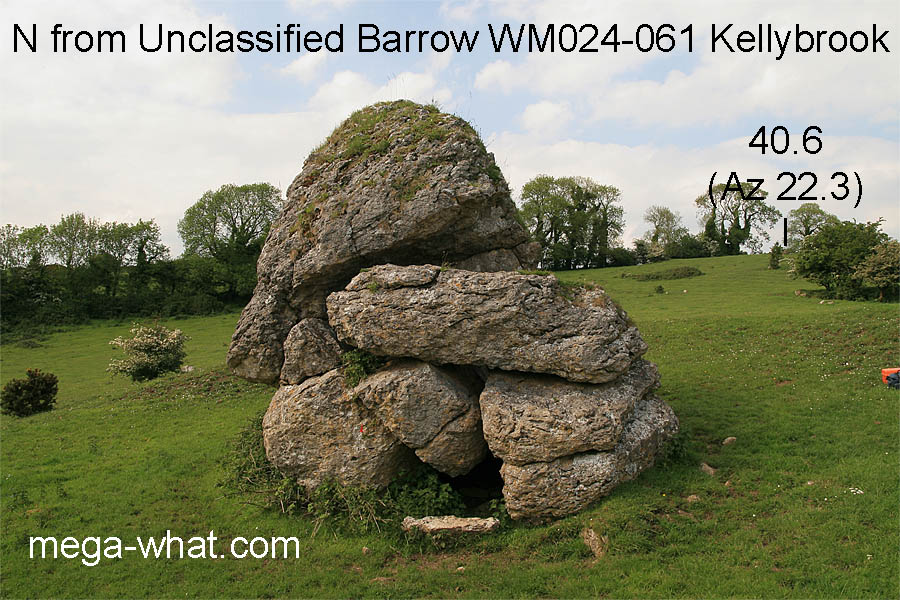 Kellybrook Barrow is on the south side of Ushnagh Hill (Hill of Uishneach), about 14km west of Mullingar. It is a National Monument (no.155) and owned by the state.
Kellybrook Barrow is on the south side of Ushnagh Hill (Hill of Uishneach), about 14km west of Mullingar. It is a National Monument (no.155) and owned by the state.
Known as the Catstone, it is reputed to be the burial place of Eriu, for whom the island of Erinn is named. Mythologically, she was the third of a triad of earth goddesses, Banba, Fohla and Eriu, who were married to MacCuill, MacCecht and MacGrené, a triad of Danaan kings, grandsons of the great god Dagda. In ancient times the Hill of Uishneach was regarded as the centre of the island of Ireland (Navel of Erinn).
Although classified as a barrow, this is an unusual monument consisting of a circular bank enclosing a large erratic boulder pile. Much of the horizon is obscured by trees.
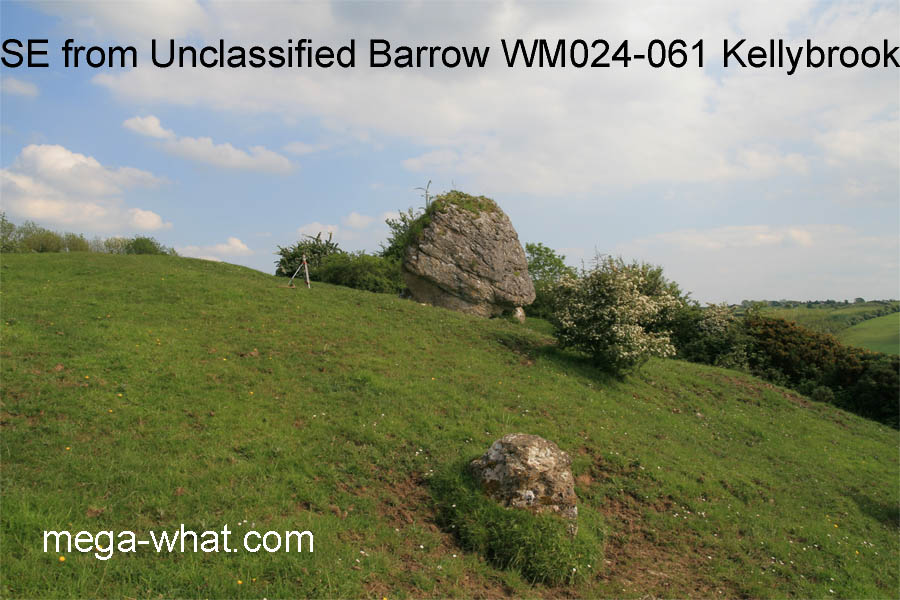 This picture shows the unusual position of the monument and the location of the survey station at the upper edge of the ring.
This picture shows the unusual position of the monument and the location of the survey station at the upper edge of the ring.
The eastern half of the skyline has not been surveyed at all.
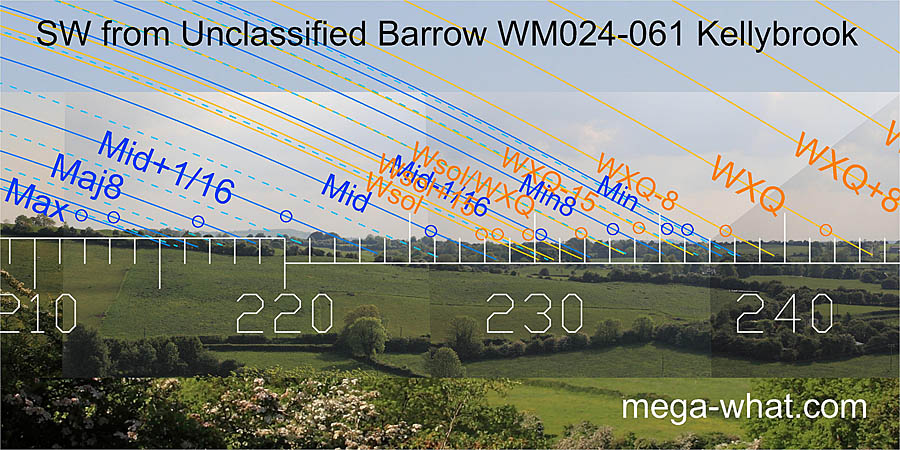 South-western lunisticesLunistices are the most northerly and southerly moons of the month. The lunar equivalent of solstices - more.
are well fitted, with the major standstillLunistice positions vary cyclically over an 18.6 year period but are fairly static for more than a year at either end of the range
just skimming an obvious rounded hump on the other side of the valley. The major eighth is at the foot of a distant hill and the sixteenth skims its western slope.
Beyond that, things appear to become rather more tenuous though the minor standstillLunistice positions vary cyclically over an 18.6 year period but are fairly static for more than a year at either end of the range
is at a bit of a dip. It is possible that more distant horizons were hidden in the haze.
South-western lunisticesLunistices are the most northerly and southerly moons of the month. The lunar equivalent of solstices - more.
are well fitted, with the major standstillLunistice positions vary cyclically over an 18.6 year period but are fairly static for more than a year at either end of the range
just skimming an obvious rounded hump on the other side of the valley. The major eighth is at the foot of a distant hill and the sixteenth skims its western slope.
Beyond that, things appear to become rather more tenuous though the minor standstillLunistice positions vary cyclically over an 18.6 year period but are fairly static for more than a year at either end of the range
is at a bit of a dip. It is possible that more distant horizons were hidden in the haze.
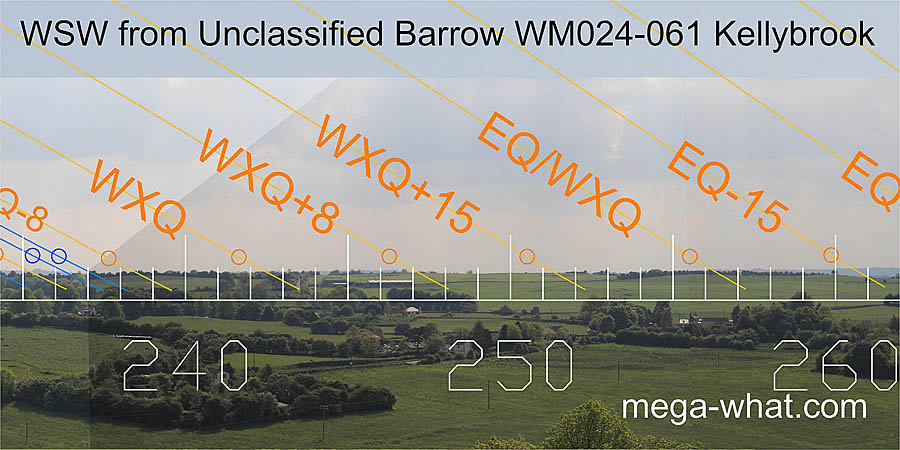 Westwards there are fewer trees in the middle distance to confuse the issue but the far horizon was again rather indistinct due to haze.
Nevertheless it would appear that the solar markers are all high points (however slight) on the nearer skyline
until we get to the equinoctial half-month bracket which is at a slight dip in the distant horizon.
Westwards there are fewer trees in the middle distance to confuse the issue but the far horizon was again rather indistinct due to haze.
Nevertheless it would appear that the solar markers are all high points (however slight) on the nearer skyline
until we get to the equinoctial half-month bracket which is at a slight dip in the distant horizon.
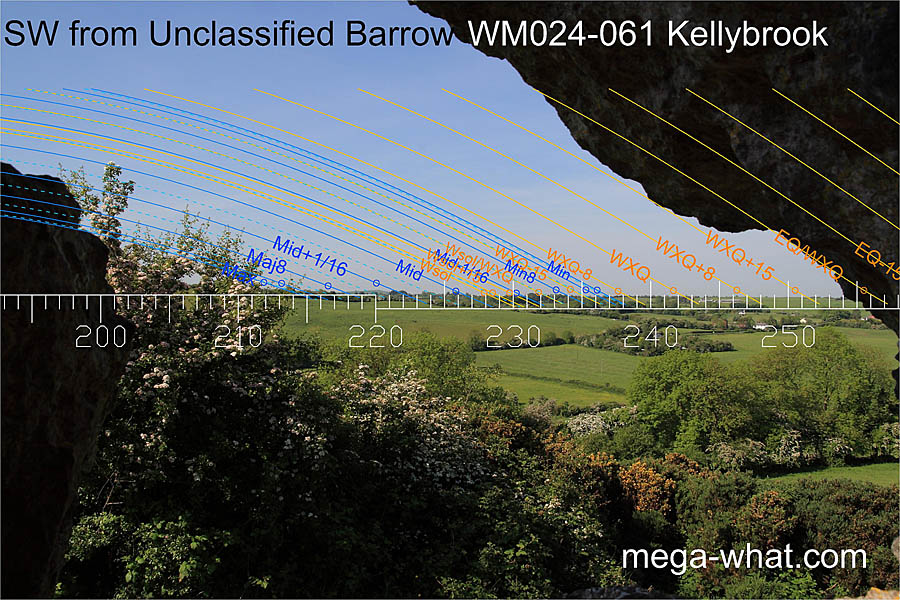
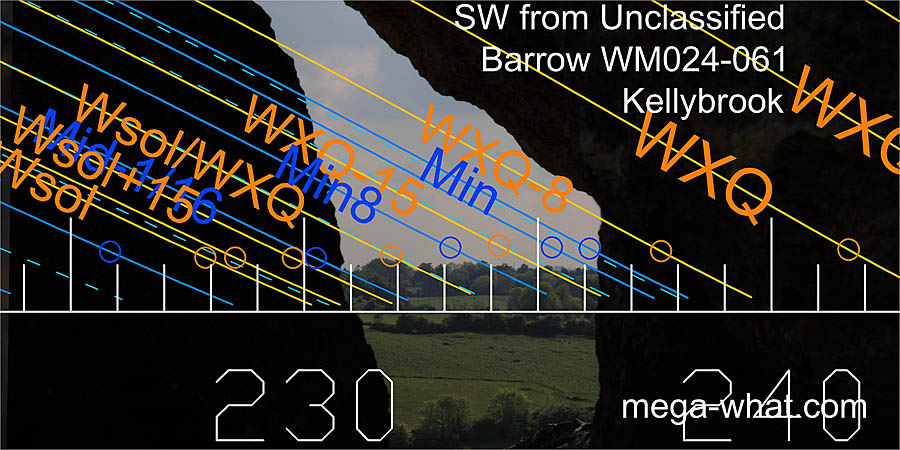
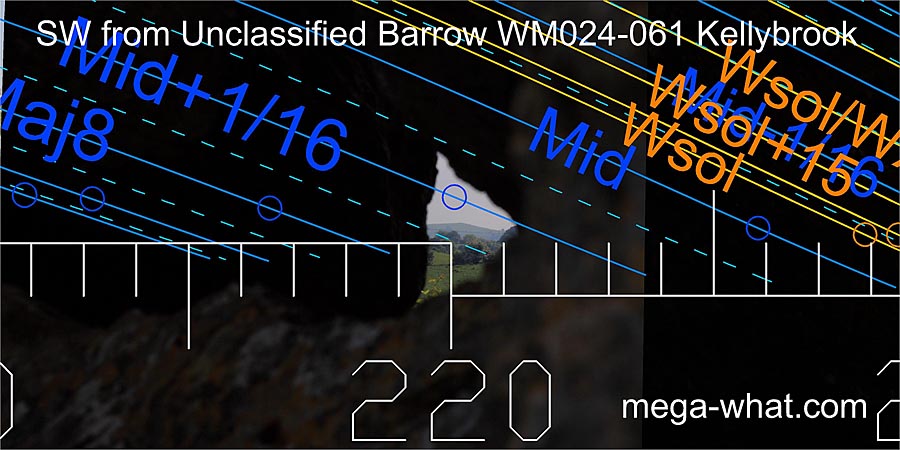 There have been suggestions that the way the setting sun shines into the cleft in the rock pile on the winter solstice may be significant.
It is possible that it was but these three pictures show that any such effect (both solar & lunar) may be obtained throughout a large part of the year and is entirely due to observer position.
There have been suggestions that the way the setting sun shines into the cleft in the rock pile on the winter solstice may be significant.
It is possible that it was but these three pictures show that any such effect (both solar & lunar) may be obtained throughout a large part of the year and is entirely due to observer position.
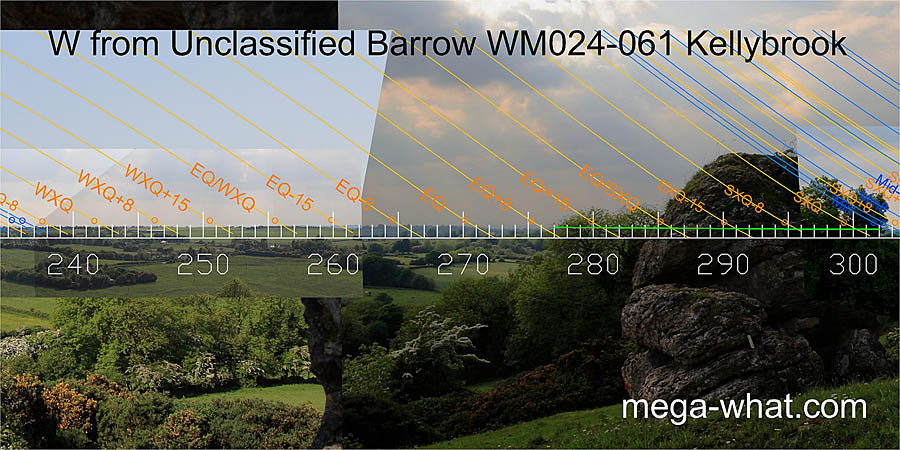
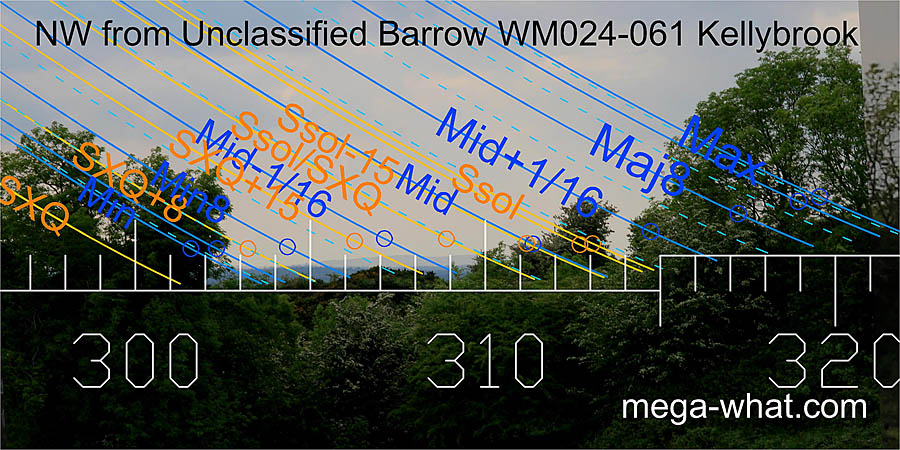 Most of the north-west is obscured by trees.
Most of the north-west is obscured by trees.
It looks as though the summer solstice & lunar midpoint occur in the vicinity of the intersection of distant and local horizons, leaving the major end of the lunisticeLunistices are the most northerly and southerly moons of the month. The lunar equivalent of solstices - more. range running up the steep local slope.
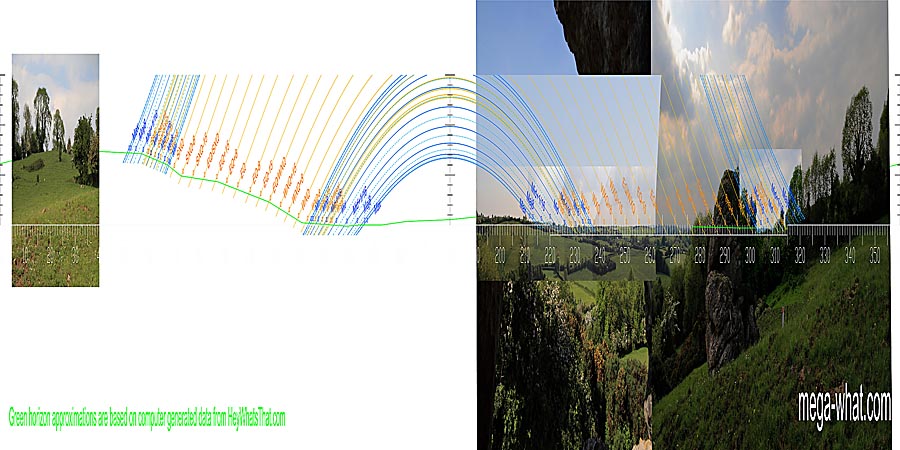 North is to the left of the local hilltop [Pic].
North is to the left of the local hilltop [Pic].
Green lines approximate hidden / unrecorded horizon segments.
Other partially surveyed monuments in the area are:
- Cairn WM024-059 on the hilltop, 420m to the north
- Barrow WM024-058, 500m to the north.
References
- Archaeological Survey of Ireland, record details. www.archaeology.ie/archaeological-survey-ireland
